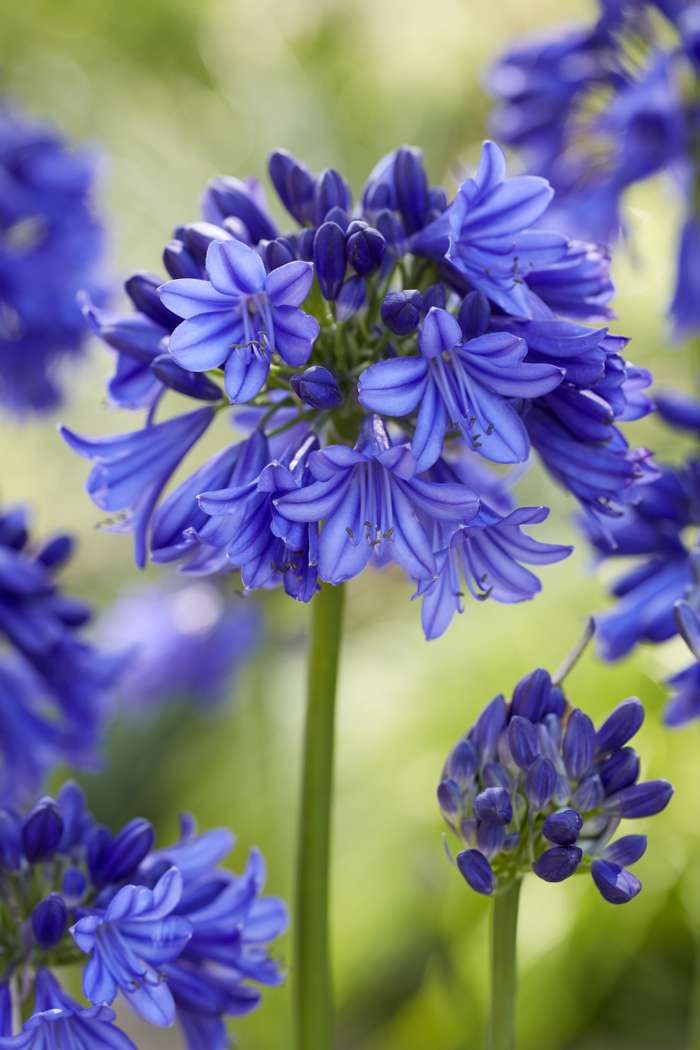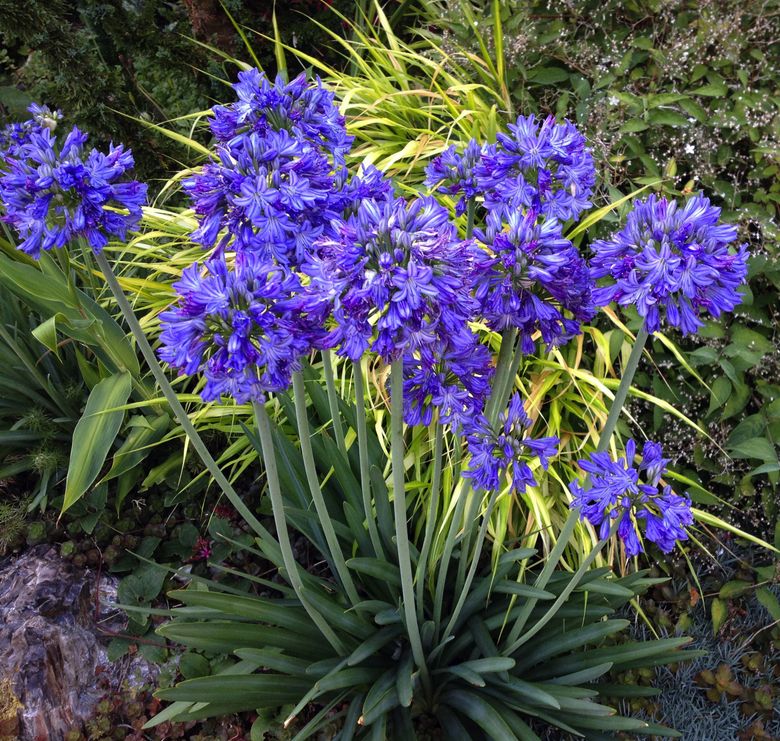Releasing the Secret to Successful Agapanthus Farming: Idea for a Flourishing Garden
In the realm of horticulture, growing agapanthus effectively calls for a strategic technique that incorporates numerous elements of plant care. With cautious focus to information, one can unlock the keys to nurturing these sensational blooms, resulting in a yard that prospers with beauty and vibrancy. By understanding the nuances of agapanthus cultivation, one can develop a setting where these plants flourish and bloom generously. In the complying with conversation, we will certainly explore necessary pointers and tricks that will certainly assist you in the direction of a thriving agapanthus garden, offering understandings right into best techniques, soil conditions, sprinkling methods, and a lot more.
Growing Agapanthus: Best Practices
When planting Agapanthus, appropriate soil preparation is important for ensuring effective development and development of these beautiful flowers. Agapanthus, commonly known as Lily of the Nile or African lily, thrives in well-draining dirt with a slightly acidic to neutral pH level - Agapanthus. Before planting, it is critical to change heavy clay soils with natural matter such as compost or peat moss to enhance drainage and give important nutrients for the plants
To grow Agapanthus, choose a location that receives complete sunshine to partial color, as this will promote healthy growth and plentiful flowering. Dig an opening two times the diameter of the plant's root round and position the Agapanthus at the exact same depth it was formerly growing. Delicately backfill the opening with soil, pressing down strongly to get rid of any type of air pockets around the origins.
Water the freshly planted Agapanthus thoroughly and proceed to maintain the dirt equally wet, particularly throughout the plant's active expanding season. Agapanthus. Applying a balanced plant food once a month can better sustain the plant's development and blooming. By complying with these finest methods for planting Agapanthus, you can produce a sensational screen of these captivating flowers in your yard
Ideal Dirt Conditions for Agapanthus
For optimum development and flowering success of Agapanthus plants, ensuring the dirt problems are ideal is essential. Agapanthus thrives in well-draining soil with a slightly acidic to neutral pH degree ranging from 6.0 to 7.0. This sort of soil enables appropriate water drain, stopping waterlogging which can result in root rot. To enhance dirt drainage, consider adding natural issue such as garden compost or peat moss when preparing the growing site. Furthermore, Agapanthus likes dirt that is abundant in nutrients, so including a balanced fertilizer during the growing period can advertise healthy and balanced growth and lively blooms.

Watering and Fertilizing Tips
To make sure healthy growth and lively blooms, appropriate watering and feeding methods are essential for successful Agapanthus farming. Agapanthus plants profit from regular watering, specifically during the growing period.
When it involves fertilizing Agapanthus, a well balanced plant food with equal components nitrogen, phosphorus, and potassium can be applied in the springtime to advertise healthy development and flowering. Slow-release plant foods are weblink suitable for offering nutrients gradually over an extensive period. Stay clear of over-fertilizing, as this can cause too much vegetation growth at the expenditure of flowers.
Furthermore, including organic issue like compost right into the soil can enhance nutrient degrees and boost soil structure, helping in the general wellness of the Agapanthus plants. By adhering to these watering and fertilizing ideas, gardeners can guarantee their Agapanthus plants thrive and produce spectacular displays of blossoms.
Trimming and Deadheading Techniques
Proper trimming and deadheading methods play a vital role in keeping the health and aesthetics of Agapanthus plants, complementing the essential practices of watering and feeding for successful farming. Pruning Agapanthus involves removing invested flower heads, yellowing or dead leaves, and total shaping of the plant to advertise far better growth. Deadheading, the process of getting rid of faded blossoms, not just improves the plant's look however a fantastic read likewise motivates more blooming.
When deadheading Agapanthus, it is suggested to snip off the flower stem at the base utilizing sharp, tidy shears. This procedure reroutes the plant's power from seed production back into origin and foliage growth, promoting a much healthier and extra durable plant. Regular deadheading can prolong the blooming duration of Agapanthus and stop self-seeding, which can bring about overcrowding.
In terms of trimming, Agapanthus normally gain from a light trim after blossoming to clean the plant and encourage fresh development. Cutting down the spent blossom stems and eliminating any dead or damaged foliage helps maintain the plant's vitality and total look. However, it is vital to prevent reducing right into the crown of the plant, as this can compromise its health and wellness.

Protecting Agapanthus From Vermins and Diseases
Executing reliable pest and condition administration strategies is important to protecting the wellness and vitality of Agapanthus plants in farming. One typical parasite that influences Agapanthus Read More Here is the Agapanthus borer, a caterpillar that passages right into the plant, causing damages to the leaves and flowers.
Along with pests, Agapanthus are at risk to illness such as root rot and fungal fallen leave places. These concerns can commonly be protected against by making sure appropriate water drainage and avoiding overwatering. Affected parts of the plant need to be without delay gotten rid of to prevent more spread if signs of condition appear. Fungicides might additionally be utilized as a therapy measure, adhering to the manufacturer's instructions carefully. By remaining vigilant and attending to bug and condition problems without delay, gardeners can assist their Agapanthus prosper and thrive.

Final Thought
Finally, successful cultivation of agapanthus calls for correct growing methods, suitable soil conditions, adequate watering and feeding, routine pruning and deadheading, and protection from parasites and diseases. By complying with these suggestions and techniques, garden enthusiasts can guarantee a flourishing garden full of beautiful agapanthus flowers. Agapanthus. Keep in mind to preserve regular care and attention to detail to advertise the health and wellness and durability of these magnificent plants
When growing Agapanthus, appropriate soil preparation is essential for ensuring effective development and development of these lovely blossoms.Water the freshly planted Agapanthus completely and continue to maintain the soil equally damp, especially during the plant's active growing season.For optimum development and growing success of Agapanthus plants, ensuring the soil problems are optimal is essential. When transplanting or growing Agapanthus, guarantee the soil is well-prepared to provide the essential foundation for the plants to establish themselves efficiently. One usual pest that influences Agapanthus is the Agapanthus borer, a caterpillar that tunnels right into the plant, triggering damage to the blossoms and leaves.